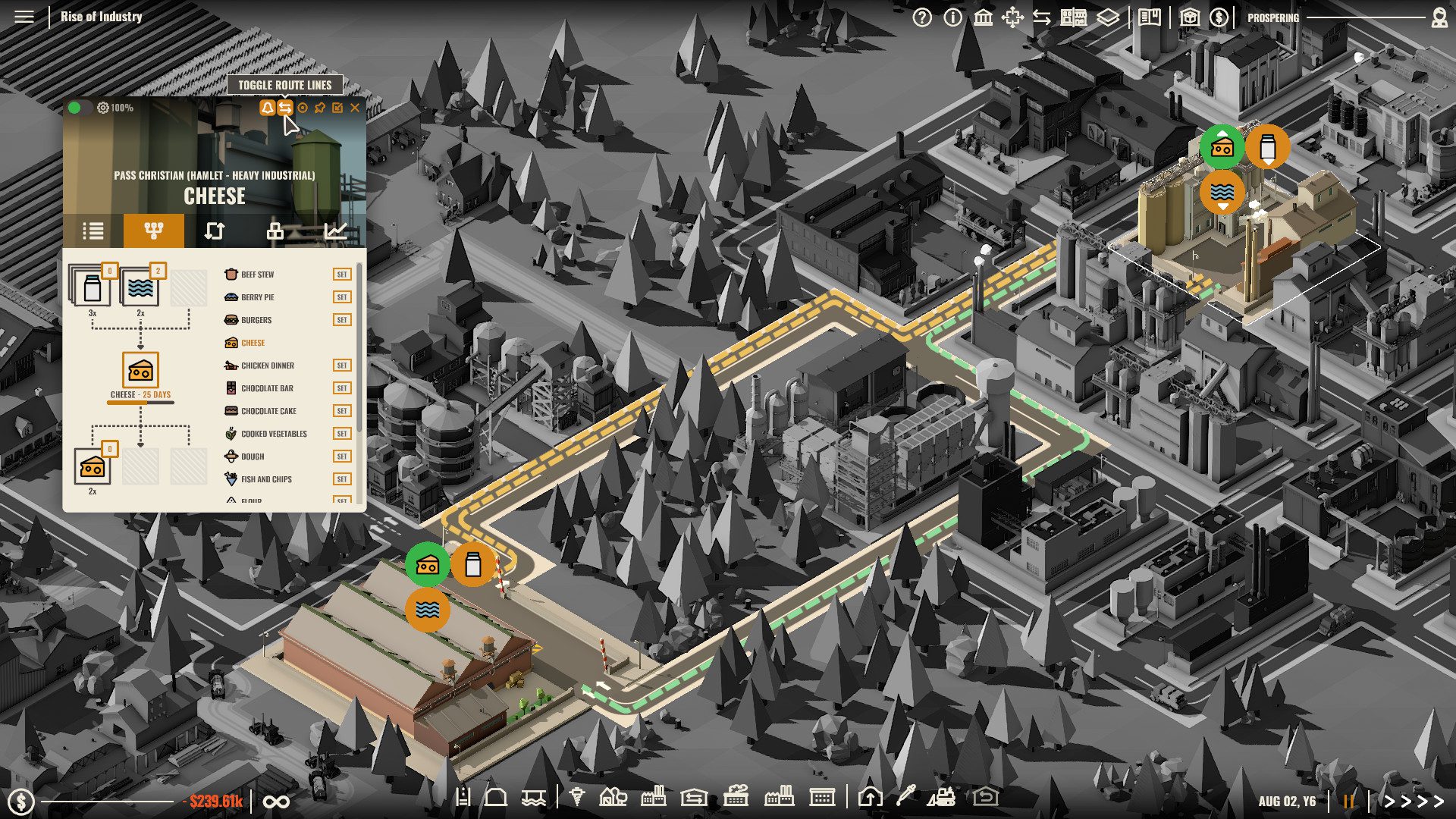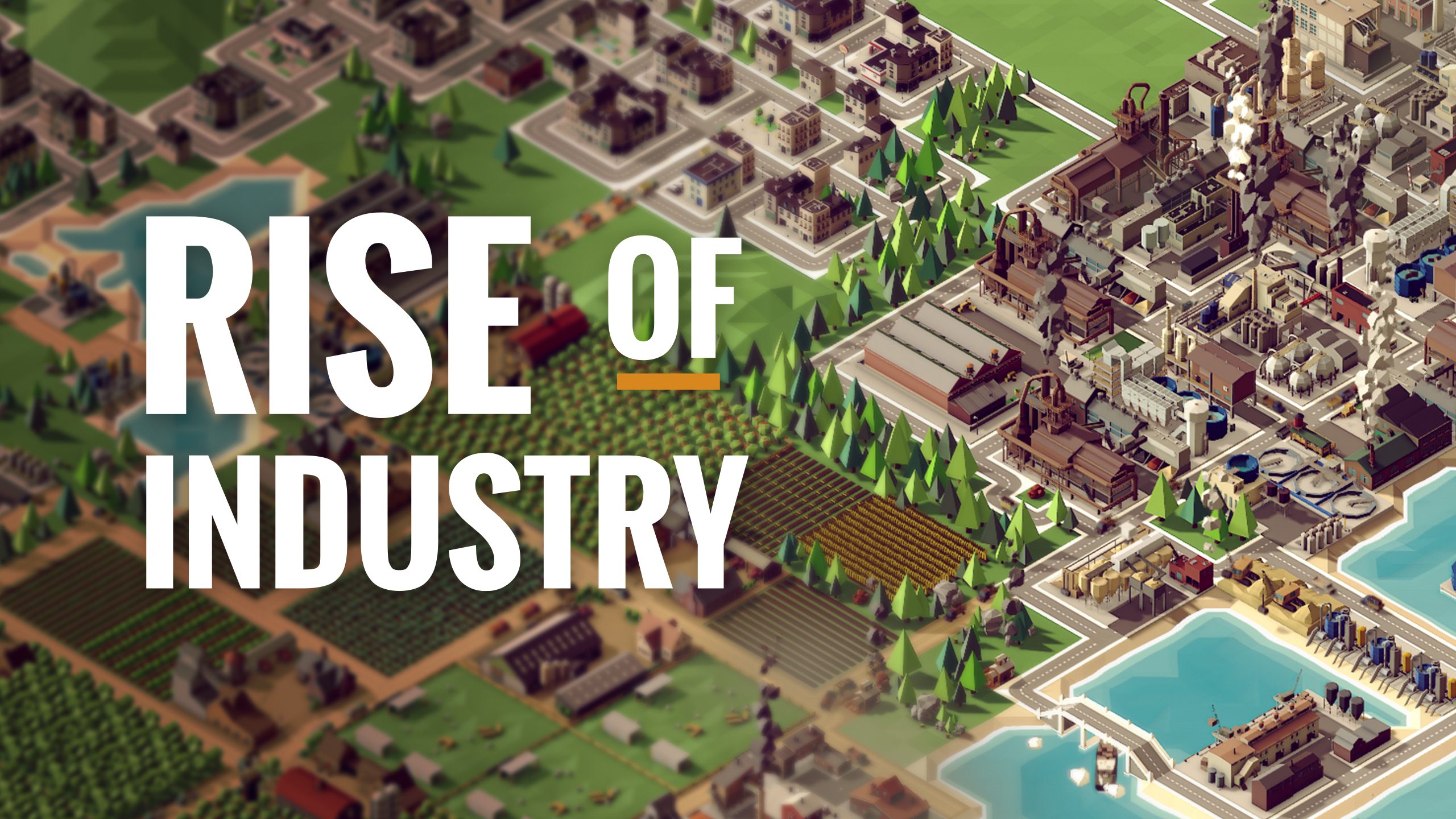Key Highlights
- A city/factory builder game where you fulfill the demands of various towns.
- Features a minimalist and visually appealing low-poly art style.
- Requires careful management of resources, production chains, and logistics.
- Includes a technology tree to unlock new buildings and upgrades, but leaves you wanting for more.
- Lacks a compelling campaign or a sense of real competition, leaving players to make their own fun which gets boring quickly.
Introduction
Developed by Dapper Penguin Studios and published by Kasedo Games, Rise of Industry aims to show the challenges of building and running an industrial empire, while respecting trademarks within the gaming industry. It features a nice low-poly art style and a sandbox mode for creativity. However, Rise of Industry does not fully meet expectations. Instead of being a fun tycoon game, it often feels like a boring desk job.
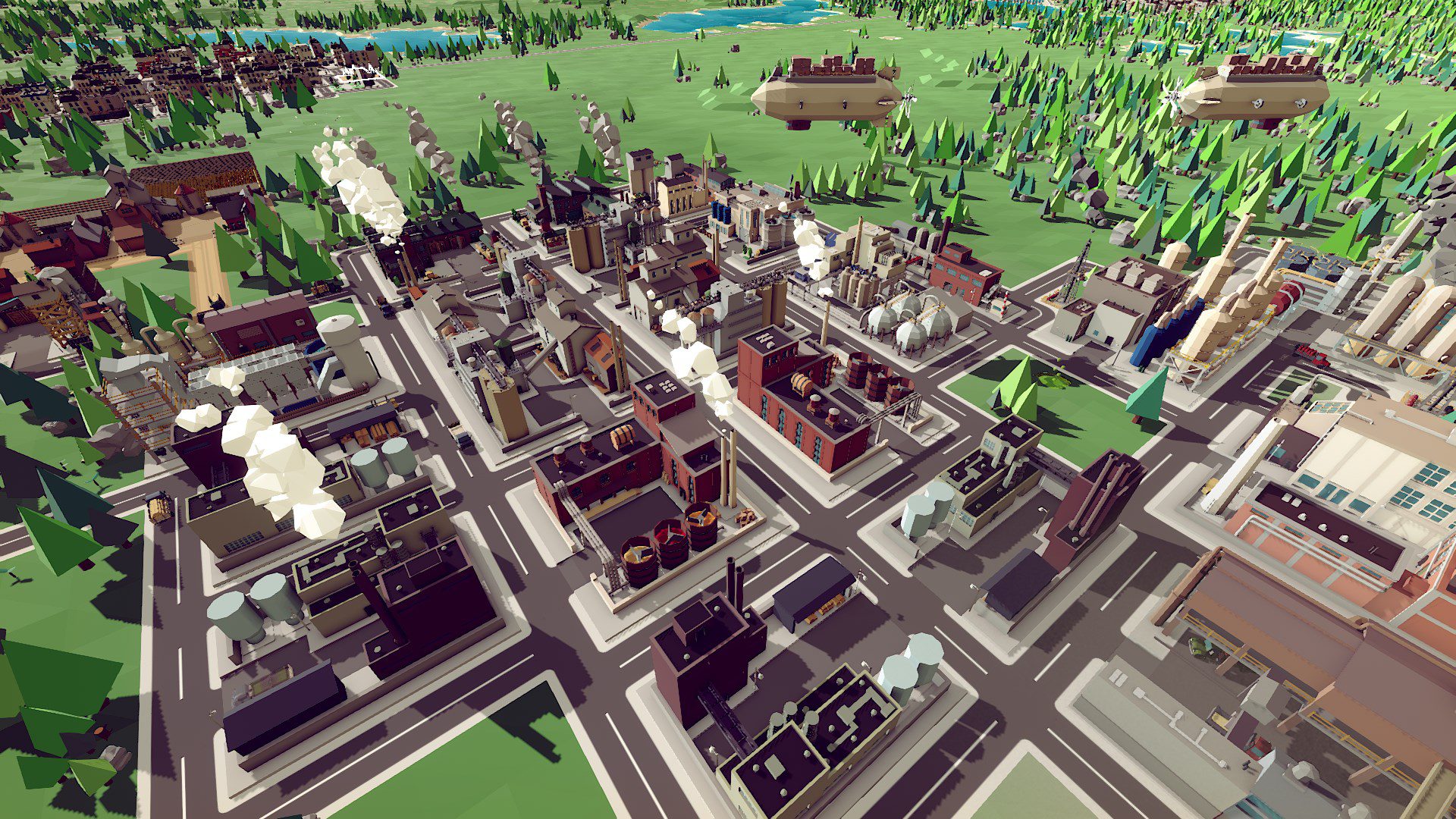
Understanding the Gameplay Mechanics of “Rise of Industry: Europe”
At its heart, Rise of Industry aims to show a tricky simulation of supply and demand, preparing players for fierce competition in a dynamic game world. Players need to find out what different towns need, collect resources, set up production, and move their goods to the market. This might seem interesting at first, but the way it’s done isn’t very satisfying.
The game doesn’t give much guidance and the goals feel unexciting, making the experience boring and repetitive. The “campaign” is really just a fancy sandbox mode, with no real story or challenge. This leaves you to try and have fun within its small set of rules.
Core Strategies for Efficient Production
Efficiency in Rise of Industry comes down to a repetitive cycle of managing resources and optimizing production. You will often need to calculate ratios. You must balance what you put in with what you get out. This balancing act can make you wonder if the game is even fun.
The game’s technology tree brings in new buildings and upgrades. However, it does not offer any real exciting advancements. It feels more like a slow trickle of small improvements. This makes the game feel more like a chore than a chance to use smart strategies.
Overall, the process feels more like doing boring accounting instead of a thrilling competition in the industrial world.
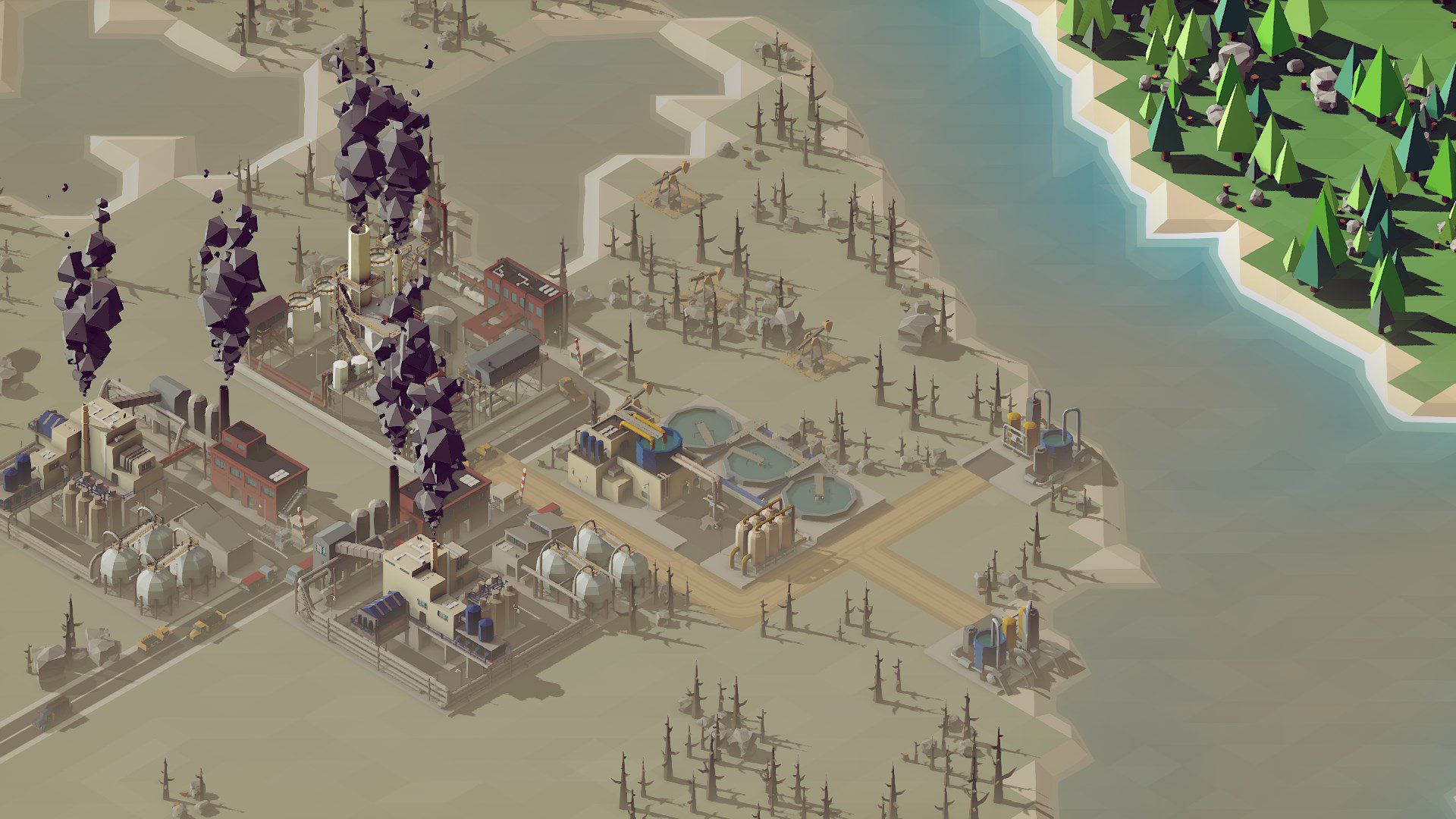
Managing Resources and Logistics
Managing resources and logistics in Rise of Industry can be disappointing. The game gives you many resources. However, most of them are similar and do not have special traits. This makes them feel like boring game pieces.
Using the game’s transport system is also frustrating. The user interface looks nice, but it does not offer clear and easy information for optimal performance, such as with Nvidia GeForce GT graphics. This forces players to figure things out by trying different approaches.
You have access to trucks, trains, and zeppelins. Still, their use doesn’t feel meaningful or strategic.
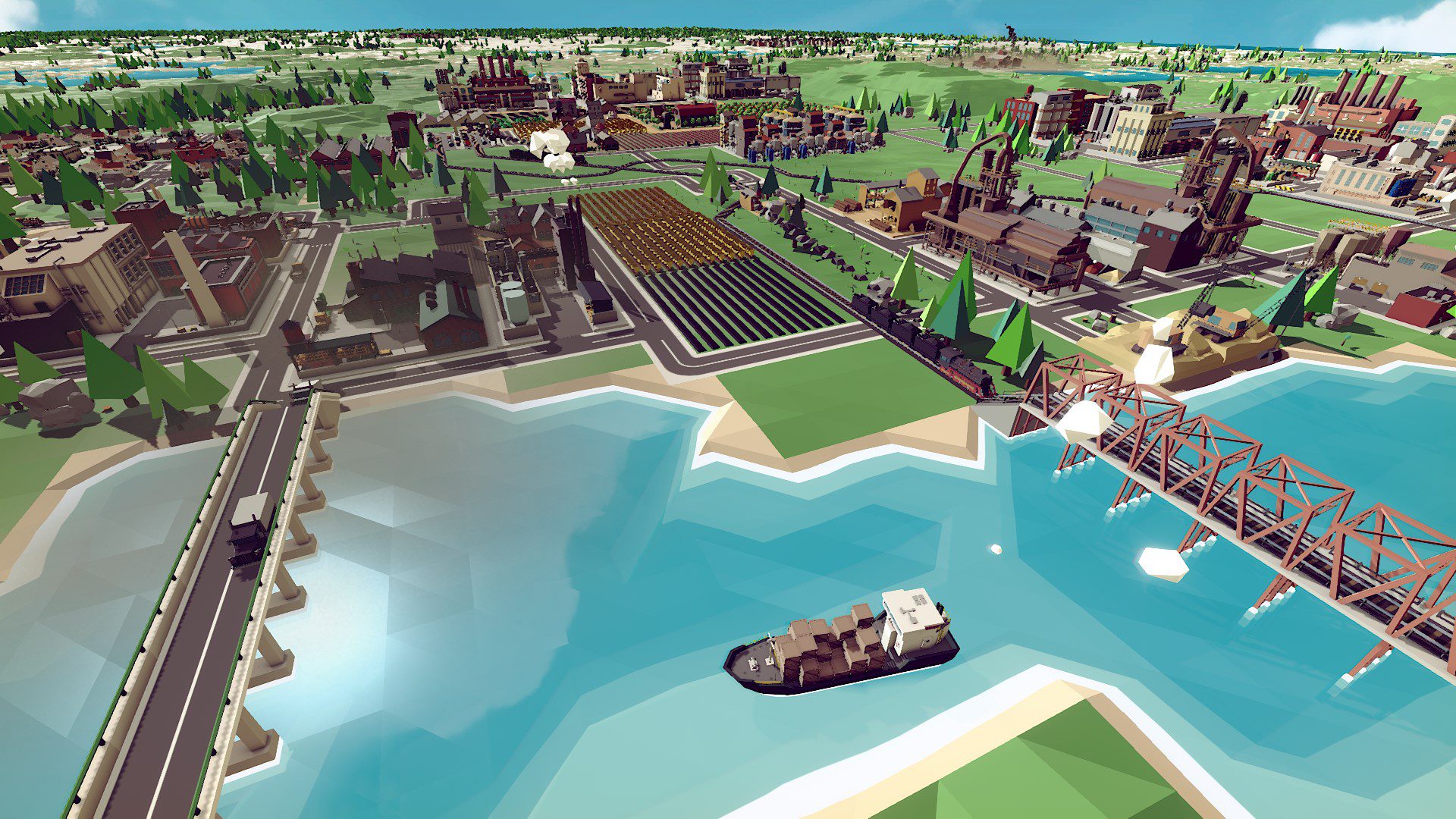
Technological Advancements and Their Impact
In Rise of Industry, the technological advancements seem minor, almost like footnotes. You can unlock new buildings and upgrades, but they do not bring much excitement or change how you play.
This lack of meaningful progress makes the game feel boring. You end up repeating the same actions, using old strategies, and not really feeling any joy or excitement from moving forward or discovering something new.
Innovations in Industrial Equipment
The new features in industrial equipment promised by Rise of Industry are quite disappointing. You do unlock new buildings, and they have some different ways of producing, but none of these changes seem particularly new or exciting.
The game lost a chance to make technology a key part of creativity and strategy. Instead, it feels like the developers just gave the old machines a new look, and that was it.
What do we get now? A game that feels stale and easy to guess, missing the cleverness that makes the best games in this genre so engaging.
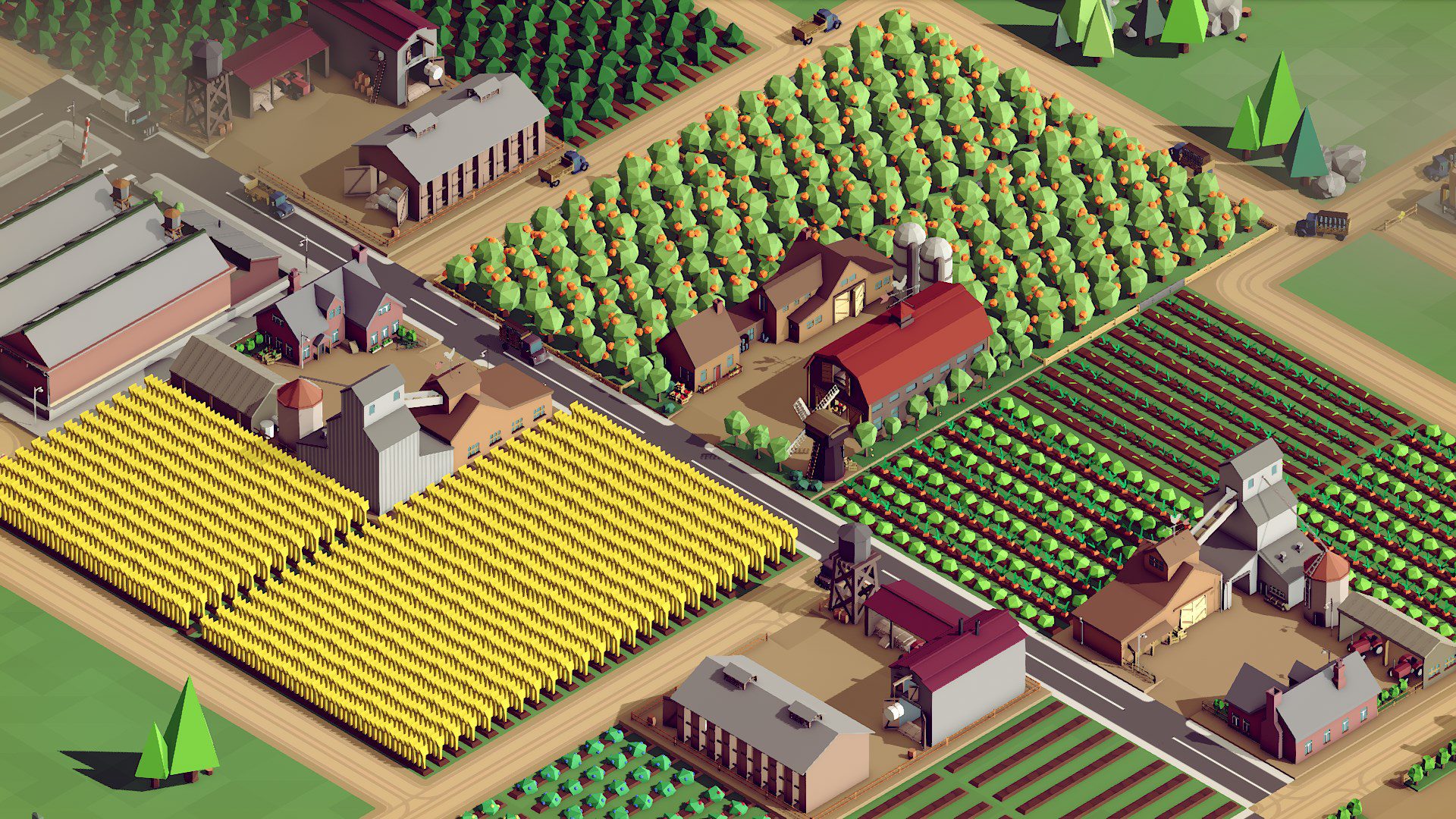
How Technology Shapes Competitive Play
The notion of “competitive play” in Rise of Industry is laughable at best. The AI competitors, devoid of any real strategic depth, simply exist as passive obstacles, occasionally vying for the same resources or building locations. Don’t expect any cutthroat price wars, innovative marketing campaigns, or hostile takeovers.
The lack of meaningful competition further diminishes the impact of technological advancements. Since you’re not engaged in a true battle for dominance, unlocking new technologies feels more like checking items off a to-do list than achieving a strategic advantage.
|
Feature |
Impact on Competitive Play |
|---|---|
|
New Buildings |
Negligible |
|
Production Upgrades |
Insignificant |
|
Transport Options |
Unremarkable |
Conclusion
In summary, “Rise of Industry: Europe” offers exciting gameplay and tech features. It focuses on efficient production and managing resources, which likely attracts players who like strategy. But, handling logistics and understanding industrial changes could be hard for casual gamers who want something easier. As the game grows with new tech and challenges, players need to expect a tough learning path and a challenging gameplay scene. Overall, “Rise of Industry: Europe” offers a deep dive into the world of industrialization, but it may not fit everyone’s taste.
